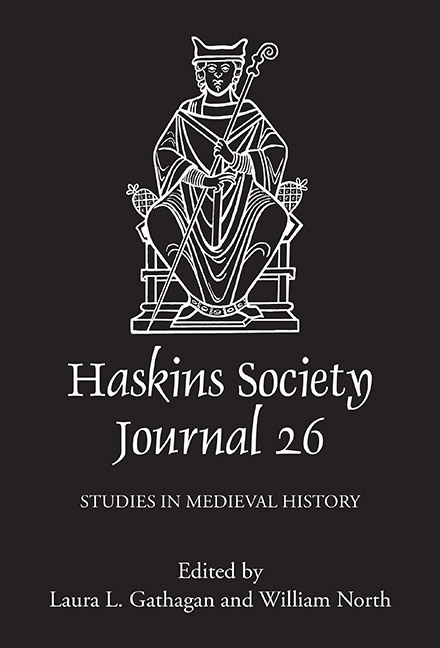15 results
565 Empowering Community Organizations with the Team Science Community Toolkit
- Part of
-
- Journal:
- Journal of Clinical and Translational Science / Volume 8 / Issue s1 / April 2024
- Published online by Cambridge University Press:
- 03 April 2024, pp. 168-169
-
- Article
-
- You have access
- Open access
- Export citation
The psychological and social impact of the digital self-support system ‘Brain in Hand’ on autistic people: prospective cohort study in England and Wales
-
- Journal:
- BJPsych Open / Volume 9 / Issue 3 / May 2023
- Published online by Cambridge University Press:
- 26 May 2023, e96
-
- Article
-
- You have access
- Open access
- HTML
- Export citation
Evaluation of a complex intervention for prisoners with common mental health problems, near to and after release: the Engager randomised controlled trial
-
- Journal:
- The British Journal of Psychiatry / Volume 222 / Issue 1 / January 2023
- Published online by Cambridge University Press:
- 18 August 2022, pp. 18-26
- Print publication:
- January 2023
-
- Article
-
- You have access
- Open access
- HTML
- Export citation
Loneliness, physical activity, and mental health during COVID-19: a longitudinal analysis of depression and anxiety in adults over the age of 50 between 2015 and 2020
-
- Journal:
- International Psychogeriatrics / Volume 33 / Issue 5 / May 2021
- Published online by Cambridge University Press:
- 17 December 2020, pp. 505-514
-
- Article
-
- You have access
- Open access
- HTML
- Export citation
COVID-19 deaths in people with intellectual disability in the UK and Ireland: descriptive study
-
- Journal:
- BJPsych Open / Volume 6 / Issue 6 / November 2020
- Published online by Cambridge University Press:
- 16 October 2020, e123
-
- Article
-
- You have access
- Open access
- HTML
- Export citation
Process of therapeutic changes in Meaning-Centered Group Psychotherapy adapted to the Portuguese language: A narrative analysis
-
- Journal:
- Palliative & Supportive Care / Volume 18 / Issue 3 / June 2020
- Published online by Cambridge University Press:
- 20 January 2020, pp. 254-262
-
- Article
- Export citation
Local radio to promote mental health awareness: a public health initiative
-
- Journal:
- BJPsych Open / Volume 5 / Issue 4 / July 2019
- Published online by Cambridge University Press:
- 12 July 2019, e60
-
- Article
-
- You have access
- Open access
- HTML
- Export citation
Are children with unrecognised psychiatric disorders being excluded from school? A secondary analysis of the British Child and Adolescent Mental Health Surveys 2004 and 2007
-
- Journal:
- Psychological Medicine / Volume 49 / Issue 15 / November 2019
- Published online by Cambridge University Press:
- 20 December 2018, pp. 2561-2572
-
- Article
- Export citation
Abbreviations
-
- Book:
- The Haskins Society Journal 26
- Published by:
- Boydell & Brewer
- Published online:
- 25 May 2021
- Print publication:
- 15 October 2015, pp x-xiv
-
- Chapter
- Export citation

The Haskins Society Journal 26
- 2014. Studies in Medieval History
-
- Published by:
- Boydell & Brewer
- Published online:
- 25 May 2021
- Print publication:
- 15 October 2015
Contents
-
- Book:
- The Haskins Society Journal 26
- Published by:
- Boydell & Brewer
- Published online:
- 25 May 2021
- Print publication:
- 15 October 2015, pp v-vi
-
- Chapter
- Export citation
Editors’ Note
-
- Book:
- The Haskins Society Journal 26
- Published by:
- Boydell & Brewer
- Published online:
- 25 May 2021
- Print publication:
- 15 October 2015, pp ix-ix
-
- Chapter
- Export citation
List of Figures
-
- Book:
- The Haskins Society Journal 26
- Published by:
- Boydell & Brewer
- Published online:
- 25 May 2021
- Print publication:
- 15 October 2015, pp vii-viii
-
- Chapter
- Export citation
Frontmatter
-
- Book:
- The Haskins Society Journal 26
- Published by:
- Boydell & Brewer
- Published online:
- 25 May 2021
- Print publication:
- 15 October 2015, pp i-iv
-
- Chapter
- Export citation
Contributors
-
-
- Book:
- The Cambridge Dictionary of Christianity
- Published online:
- 05 August 2012
- Print publication:
- 20 September 2010, pp xi-xliv
-
- Chapter
- Export citation



